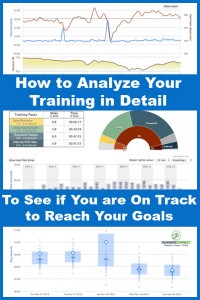Any of these sound familiar? Ever blamed your injury on one or more one of the following?
- I don’t stretch enough
- I’m an overpronator
- I need to stop heel-striking
- I should be running at 180 steps per minute
The fact is, many runners are still being given misinformation on the causes, solutions and prevention strategies for many running related injuries.
We know this because research confirms it. A study by Saragiotto in 2014 ‘What Do Recreational Runners Think About Risk Factors For Running Injuries?’ listed the top believed reasons for injury as:
- Not stretching enough
- Wearing the wrong shoes
- Excess of training
- Lack of strength
- Not warming up
As the study pointed out, many of these beliefs are either lacking considerably in the evidence department or in some cases are simply incorrect. It therefore concluded that one of the most useful ways that professionals can help runners reduce risk of injury is education.
This may help explain why despite all the modern developments in technology, shoes, running styles, etc. the incidence of running related injury remains the same as it was in the 1980’s.
So let’s take a look at some of these running injury myths and hopefully help clear up the confusion.
Bonus Content
Author of this post, coach, sports therapist and gait analyst Matt Phillips debunks myths further in this special video.
Want to learn even more? Then visit Matt at sportinjurymatt.co.uk. A website focused on everything training.
Not Stretching Enough
If there is one thing that running research is pretty much agreed on, it’s that static stretching before a run does not help reduce injury or increase performance.
In one study (Pope et al., 2000), 1538 male army recruits were put through twelve weeks of training, with half of them performing a 20 second static stretch for each of six major leg muscle groups during every warm-up. After the twelve weeks, lower-limb injuries totalled as follows: 158 in the ‘stretch’ group, 175 in the ‘non-stretch’ group.
The study concluded that as long as you have a normal range of movement. And let’s remember running is not like martial arts or ballet. It really doesn’t require a lot of range of movement. Stretching is ‘unlikely to do anything to prevent injury’.
Some studies went even further. Wilson (2010) concluded that stretching may even decrease performance & increase energy cost, neither a particularly attractive proposition for any runner.
As far as static stretching after a run, the evidence is no better. The belief of post run stretching is that it will reduce soreness over the next few days (DOMS: delayed onset of muscle soreness) and help reduce risk of injury. Unfortunately, there is no research to support this.
Though some runners do find that taking out their post-run stretch results in more next day soreness, others report no difference and some find that they are actually less sore by not stretching. With regards to stretching reducing risk of injury, this is very difficult to prove as there are so many other factors that could be responsible.
The general consensus is that in the name of injury prevention, most runners spend way too much time trying to achieve a range of movement they will never need.
For more on stretching, please read Does Stretching Help Reduce Injuries and Is Sitting All Day Really That Bad For A Runner?.
Wearing The Wrong Shoes
The running shoe industry is huge. Fuelled by runners’ obsession with whether they’re wearing the right footwear.
Most of you will be familiar with terms like ‘overpronation’ and have probably been recommended shoes according to your foot/arch type (high arch, normal arch or low arch).
It may therefore come as a bit of a surprise to hear that multiple studies such as Richards et al. (2009) ‘Is your prescription of distance running shoes evidence based?’ conclude that the prescription of running shoes using the foot/arch type is not evidence based.
The problem with labelling any runner as an ‘overpronator’ is we really don’t know how much pronation is normal. Anatomical structure and function can vary considerably from one foot to another. And the idea that ‘somewhere in the middle’ will help prevent injury is nonsense.
The whole concept of placing runners into three categories according to how much they pronate and handing out shoes accordingly is based on no evidence whatsoever.
The problem for shoe shops is we do not as yet have an evidence based model to replace the antiquated foot type prescription. The only factor that research does support as a method for choosing shoes is comfort.
There are many variables that can affect comfort, e.g. width, drop, stack height, level of cushioning, lace mechanism, etc. The best way of choosing shoes that we have to date is therefore ‘try on lots and see what feels good for you’.
To reduce risk of sudden overloading, make sure you do not make too extreme a change all at once, e.g. if your body is used to a traditional trainer with loads of support and a high heel to toe drop, don’t suddenly try running in a zero drop minimalistic trainer.
Not sure what pronation means? Want to learn more about bio-mechanics? Then check out our Introduction To Running Biomechanics.
Heel Striking
Though heel-striking did not appear in the Saragiotto study, when it comes to myth busting we need to mention it.
Too many runners still believe that heel-striking is bad for you, and that everyone should try to land on midfoot or forefoot.
When it comes to clearing up this myth, a study by Peter Larson (2010) helps clear up the confusion.
In his paper ‘Foot strike patterns in Recreational Marathon Runners’, Larson with students filmed marathon runners at the 10km (6 mile) & 32km (20 mile) point and later classified them according to their foot strike. The results were as follows:
- 10km (936 runners): Heel strike: 88.9%; midfoot: 3.4%; forefoot: 1.8%; asymmetrical 5.9%
- 32km (286 runners): Heel strike: 93%; Forefoot: 0%
Looking at this data, it’s clear that either all of these marathon runners were doing it ‘wrong’ (unlikely) or heel-striking is actually the most efficient way for most runners to run a marathon.
The important factor is, not all heel-strikes are equal.
The reason that heel-striking has mistakenly got a bad name is that it often accompanies an ‘over-stride’, i.e. when you land your foot too far out in front of you onto a locked out (or close to straight) knee. Over-striding has been linked to injury but the heel-strike is not the guilty party. Many runners land close to their body, still manage to heel-strike and suffer no related issues.
Want to learn more about proper running form? Then please read Proper Running Form.
Running At 180 SPM Cadence
Cadence refers to how quickly your legs turn over when running. For example, you could have two runners at the same pace with one taking 160 steps per minute and the other taking 180 steps per minute.
One of ways we sometimes use to reduce over-striding is gently increasing cadence.
However, along with this practice has evolved the idea everyone should be running at a higher cadence. And that the best cadence to run at is 180 steps per minute. Unfortunately, neither are true.
This myth is the result of misinterpretation of research carried out by the famous running coach Jack Daniels. At the 1984 Olympics in Los Angeles, Jack Daniels noticed that the elite distance runners all ran at 180spm or more.
The most important two words in that last sentence are ‘or more’. Many of the elites whom Daniels recorded were running above 190spm. At no point was 180 identified as the ‘perfect number’. There is no such thing as the ‘perfect running form’. The challenge is to find the best form that works for you, and this also applies to cadence.
It is also very important to note that these athletes were elites, running at elite paces. Cadence varies with speed; Usain Bolt for example runs his 100m with a cadence of 221spm.
We should never expect anyone running at 10 minute mile pace or slower to have a cadence much over 160spm. If anyone says otherwise, please refer them to this article.
In Summary
So there we have it, some popular running related myths that just won’t seem to disappear.
Don’t be surprised if you hear a coach, trainer or medical professional using these myths. They are heavily ingrained into our culture and in many cases still taught on courses & workshops, but hopefully you the reader now have a clearer idea on what not to waste your time on.
In a future article, we will pick up on some running injury ‘treatments’ that likewise need to be put to bed. Until then, happy running!






